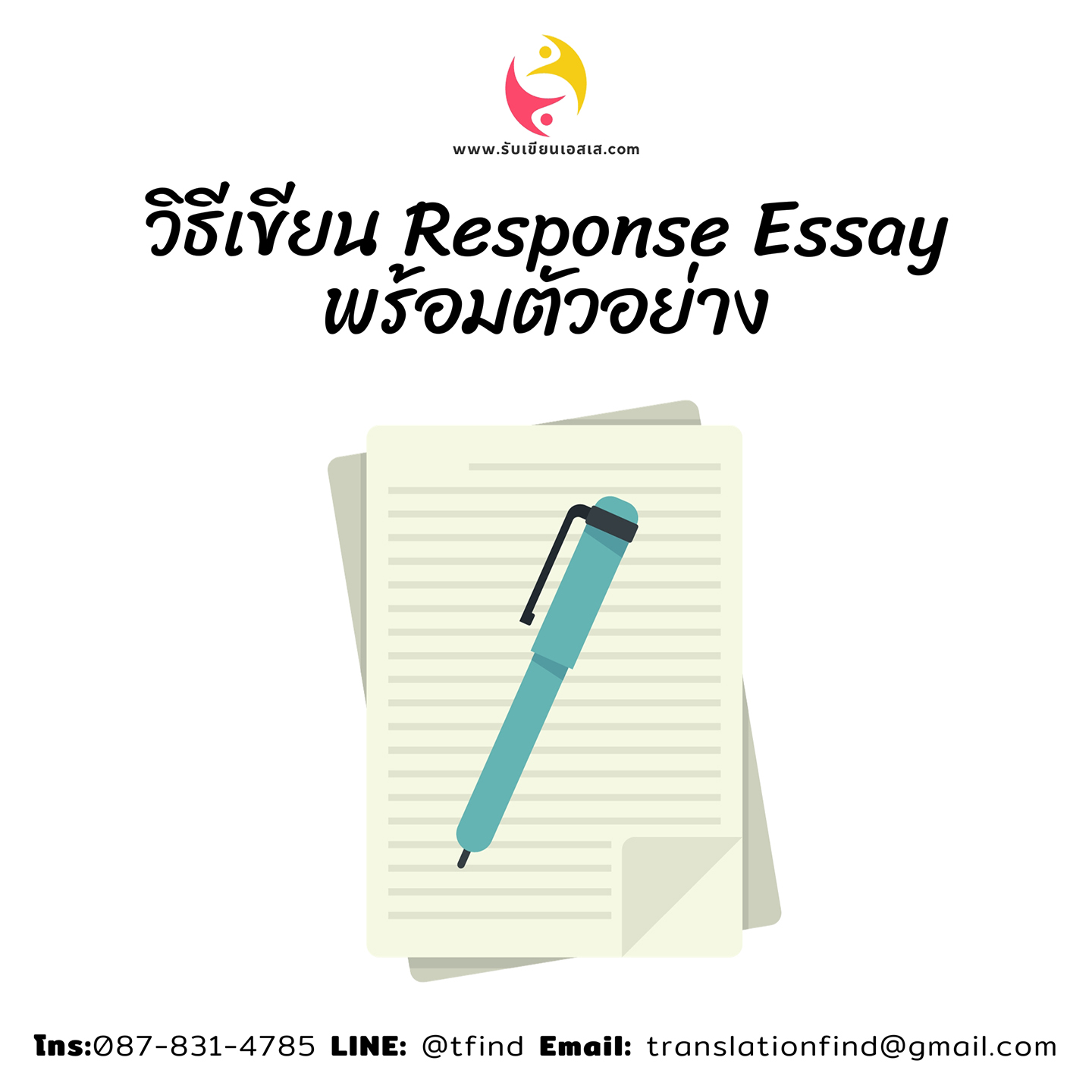การเขียน Literary Analysis Essay
การเขียนเรียงความวิเคราะห์บทประพันธ์ – LITERARY ANALYSIS ESSAY
ในการตรวจสอบงานประพันธ์สักชิ้น เราควรต้องชั่งน้ำหนักถึงความสำคัญและเข้าใจโครงสร้าง ควรระวังรายละเอียดย่อย รู้ความหมายของแต่ละตัวและทำการแปลบทความด้วยตัวเอง งานวิจัยเรียงความวิเคราะห์บทประพันธ์จะต้องมีข้อมูลและหลักฐานประกอบชัดเจนจากตัวของงานเขียนเอง
การวิจารณ์จะทำโดยอาศัยพื้นฐานจากความเข้าใจในงานเขียน ทำการเปรียบเทียบและตัดสินทิศทาง ลักษณะและองค์ประกอบ โดยควรวิเคราะห์ไปที่ส่วนที่เราต้องการวิเคราะห์ในงานเขียน
เริ่มจากการวิเคราะห์ผู้เขียนและชิ้นงาน ไม่ควรสรุป แต่ควรกล่าวอ้างรายละเอียดสำคัญของงานเพื่อที่ผู้อ่านจะได้รู้และสามารถทราบแนวคิดว่างานเขียนมีที่มาที่ไปเช่นไร
Literary Analysis Essay
Purpose: To analyse a book or poem with reference to a specific thesis statement.
Introduction: Introduce the book and context, create interest and present a thesis statement to discuss.
Body: Presents the evidence which supports the thesis statement.
Conclusion: Shows how the evidence has confirmed the thesis statement.
Language: Clear signposting. Paraphrase or quote the original text as the evidence.
Other considerations: We can assume the reader knows the character and the book. We do not, therefore, need to summarize the plot. Note that while this essay type discusses the book, the character analysis essay is quite similar in format but narrower in scope since it discusses only the development of a character.
>>> สั่งงานเขียนกับ Native Writer งานคุณภาพ แกรมม่าเป๊ะ คลิก! >>>
ตัวอย่างการเขียน Literary Analysis Essay
Silver Linings: The Creation of Sympathy
In Silver Linings by W.T. Monaghan, the author presents a tale in which the principal character, the Duke of Somerset, encounters great hardship and misfortune throughout his young life, until finally, he meets and is able to marry the young lady of his dreams. This essay contends that Monaghan extends the difficulties that befall the Duke to build a sense of sympathy in the reader through cultivating an emotional level which augments the emotional response experienced by the reader. It is through this clever layering, allied to the impression that the Duke endures his setbacks with such admirable fortitude, that the reader becomes ultimately delighted when the Duke’s luck changes with his marriage.
Monaghan opens with the death of the Duke’s mother while he was away at boarding school. The reader is first told of the Duke’s idyllic home life with his mother (pp.21-24) before they must part when he begins his education (p.30). The scene at the station when the Duke says goodbye to his mother for what will eventually be revealed to be the last time (p.30) is a poignant passage which the author uses to deepen the sense of loss when the Duke’s mother passes away shortly afterwards.
The second incident used by Monaghan to play with the emotions of the reader is the failure of the Duke’s investment. The author introduces this episode by carefully developing the sense of the Duke’s sentimental attachment to the money which was inherited from his late mother (p.86). The Duke’s desire to succeed can be seen as a tribute to his mother and her memory, so the loss of everything is seen as a tragedy on multiple levels. The Duke is left bereft, in both financial and emotional terms, as Monaghan points out; “the Duke found himself bereft in soul and wallet” (p.94).
The final example used by Monaghan to invoke sympathy takes place in the final months of World War I, when the Duke loses both legs in an accident during training. The author allows the reader an understanding of the significance to the Duke of completing his training and serving his country in the final push against the Germans. This serves only to amplify the magnitude of the tragedy when the Duke is not only left unable to walk, but is also “unable to make his contribution to the war effort” (p.75). Again, Monaghan has taken a simple drawback and dramatized the effect through constructing an emotional background – the Duke’s inherent need to serve militarily (pp.68-71) – which hence deepens the feelings of sympathy generated in the reader.
In every one of the examples outlined above, Monaghan uses his descriptive and narrative skills to show an emotional link between the Duke and that which he is about to lose. On each occasion, the subsequent loss is much more deeply felt, by both the reader and the Duke. When the Duke is then able to bear his tragedies with such quiet dignity, the reader is drawn to admire him greatly. Accordingly, the happiness experienced by the reader when the Duke finally enjoys his one successful moment in his life is much greater than it would ordinarily have been, had Monaghan not sought to apply this skillfully layered organizational approach to his novel.
(Disclaimer: Silver Linings is an imaginary book and W.T. Monaghan is an imaginary author. Their role in this essay is to serve as an example.)
>>> สั่งงานเขียนกับ Native Writer งานคุณภาพ แกรมม่าเป๊ะ คลิก! >>>



